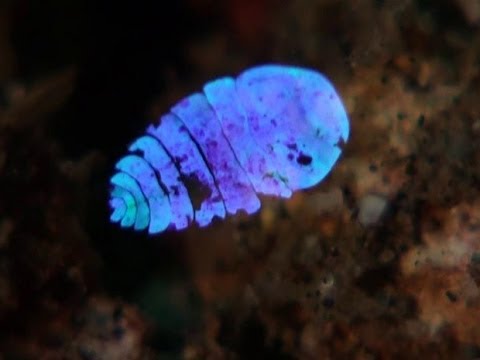
[Image above] Still of a sea sapphire captured from the American Chemical Society’s video “The secret to the sea sapphire’s colors and invisibility.” Credit: American Chemical Society; YouTube
The most beautiful animal you’ve never seen could hold the key to uncovering the next generation of reflective coatings and other optical technologies.
What’s this mysterious creature, you ask? It’s the Sapphirina, also known as the sea sapphire. These incredibly small, little-known copepods—small aquatic crustaceans found in both salt and fresh water habitats—seem to be invisible to the naked eye one minute and glowing iridescent blue, violet, or red the next.
The factors that contribute to the appearance (and disappearance) of these different hues have eluded scientists, so researchers at the Weizmann Institute and the Interuniversity Institute for Marine Sciences in Israel are taking a closer look at the tiny organisms to figure out the science behind the “magic” of their seemingly instantaneous color changes and invisibility.
The latest research, published in the Journal of the American Chemical Society, explains that “some of the most spectacular colors produced by organisms are derived from periodic layered structures on the length scale of the wavelengths of visible light.”
ACS provides the below video that shows the sea sapphire in action, disappearing and reappearing before our very eyes.
Credit: American Chemical Society; YouTube
The team looked at live Sapphirina males—which tend to exhibit brighter colors than females—and measured light reflectance and spacing between crystal layers that make up the structure of the organism.
The team found that “changes of reflectance depended on the thickness of the spacing. And for at least one particular species, when light hits an animal at a 45-degree angle, reflectance shifts out of the visible light range and into the ultraviolet, and it practically disappears,” according to an ACS news release about the study.
The findings could help design new technology for artificial photonic crystal structures, which have potential real-world applications in things like reflective coatings and optical mirrors.
The paper is “Structural basis for the brilliant colors of the Sapphirinid copepods” (DOI: 10.1021/jacs.5b05289).
